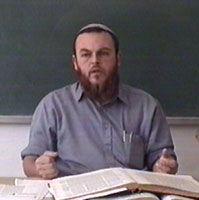Beit Midrash
- Torah Portion and Tanach
- Bereshit
- Noach
- Sections
- Chemdat Yamim
- Parashat Hashavua
Noach is categorized in the parasha’s opening as a man who is tzaddik (righteous) tamim (perhaps most safely translated as complete). Some say that these two adjectives relate to different sides of his persona. Ibn Ezra and Seforno say he was a tzaddik in his actions and tamim in his thought. Avot D’Rabbi Natan says that tamim related to his body, as he was born circumcised, so he was complete without the need to be fixed. The Ramban says that tamim means that he was complete in his righteousness.
According to all approaches, why was such a great man unable to impact his generation? According to the opinion that "in his generations" means that in comparison to other generations he was not exceptional, we understand, but according to the opinion that it was a praise that he was able to maintain his righteousness even in a difficult generation, the matter is difficult.
Members of the Gerrer dynasty developed a beautiful approach in this regard. The Sefat Emet (5652) cites the gemara (Taanit 15a) that tzaddikim provide light and yesharim (the straight) provide joy (based on the pasuk: "Ohr zarua latzaddik u’leyishrei lev simcha" (Tehillim 97:11)). He explains that tzaddik refers to the level people reach after the sin of Adam, and this is what Noach attained. Our forefathers are referred to as yesharim, whose simcha hints at the level of man before that sin, which is related to the joy that existed in the Garden of Eden.
The Sefat Emet explains the connection between Yom Kippur and Sukkot along similar lines. Yom Kippur is dedicated to making us tzaddikim, as we emulate angels. Sukkot is a holiday of joy, when we are able to take mundane agricultural leftovers and turn them into a holy sukka.
The Sefat Emet’s grandson, the Lev Simcha, applies these concepts to the context of Noach and Avraham. Tzaddik tamim means that Noach insulated himself from interaction with the people of his generation so that they would not ruin his righteousness. Avraham, in contrast, was a chasid, meaning that he loved Hashem enough to make a difference in his generation.
The midrash (Bereishit Rabba 30:10) compares Avraham to a friend of the king who saw him in a dark alley and started to light it up through a window. The king asked him to do better and come outside with a lantern. It cites a pasuk about Avraham that demonstrates that he was the epitome of lighting the alley for the King. The Sefat Emet explains that Avraham’s mesirut nefesh in spreading the light made him fit to be a leader, a chasid who outshone the tzaddik tamim that Noach was.
On Yom Kippur, we give permission to pray with the sinners, but we still emulate the angels who are beyond serious contact with people. On Sukkot, we take the etrog (representing the righteous) but can only fulfill the mitzva if we combine it with the arava (representing sinners). Rav Tzvi Yehuda Kook often pointed out that there is even a minhag/mitzva accomplished with the aravot alone and not with the etrog. We, of course, prefer the mitzva of combining them all.






















